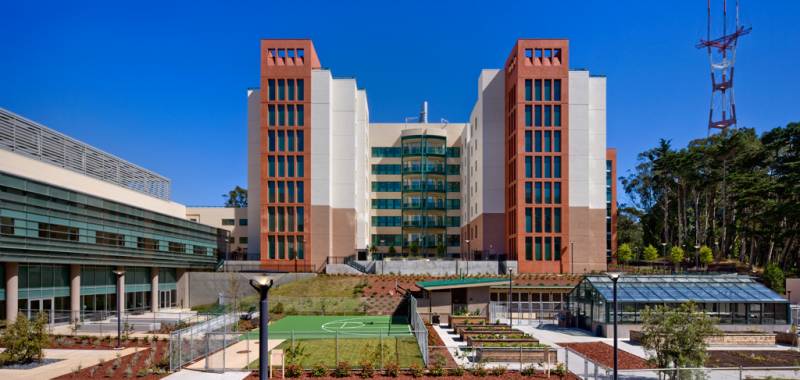Dr. Ayanna Bennett, an incident commander with the San Francisco Department of Public Health, says the message from other jurisdictions was that, in congregate living circumstances, nothing works.
“They were saying, ‘By the time you get there, it’s already everywhere,’” Bennett remembers. “And so that’s how we entered the building. Oh, my God, it’s already everywhere.”
But that wasn’t the case. In part, says Bennett, because when COVID-19 showed up at Laguna Honda it was found mainly among staffers. So the facility’s nurse manager, Irin Blanco, not only sent home workers who seemed sick, but also others who came into contact with them.
“That aggressive movement, to take as much virus as you suspect might be there out of the building is the key to everything,” Bennett says.
Bennett says health officials knew that they couldn’t keep the coronavirus away from Laguna Honda forever. So they sought to interrupt transmission of the virus between staffers. The health department then began aggressive surveillance, gathering data by asking staffers more questions about their potential exposure to the virus, even if they didn’t have symptoms.
“That, I think, is a shift even for us,” she says. “It isn’t really traditional to do that, because we have not had the resources to be able to do that. We still don’t.”
Support for Staffers, Sick and Not
Over time, Laguna Honda’s administrators observed that workers passed the virus to each other; now, they represent three-quarters of the cases. Some nurses work in multiple places; some staffers commute on public transit between two counties. Even as much of the Bay Area continues to stay at home, the department found that Laguna Honda’s front-line workers are exposed to numerous instances of community risk.
So now Bennett says the facility asks every worker every day about their contacts.
“People used to work where they wanted and you would not necessarily even know,” she says. “But now we really do need to know because it has happened multiple times that someone working in an outbreak somewhere essentially carries that infection to another facility.”
The questions prompt protective actions: for some staffers, the health department has paid for hotel rooms, to minimize their exposure to other essential workers. And Laguna Honda sends workers home — but with pay — to be cautious.
Not all long-term care facilities can and will do that. But San Francisco can protect workers from losing their jobs for getting the coronavirus while working. And Gov. Gavin Newsom now has signed an executive order granting workers’ compensation benefits to those who must work outside the home, which would cover at least some workers in the city’s long-term care homes: It’s not yet clear whether the benefits would help workers on registries, like nurses.
“Anything that helps staff stay in the positions we need them to be would be really helpful because lack of staff makes everything else really very difficult,” Bennett says.
Beyond surveillance and paid leave, the San Francisco Department of Public Health says other actions have helped stem the spread of COVID-19. More training on infection control procedures, the development of plans to segregate existing patients, and detailed policies on transfers and admissions for patients as policies informed by the Laguna Honda outbreak.
Bennett acknowledges that the coronavirus remains a threat at Laguna Honda. But she says the health department has created a “tool kit” that can help facilities work through these issues.
“We’re actually lucky something will work,” she says. “If Laguna Honda had not had any sense of containment we would be even more stuck.”

